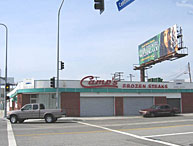
INVESTMENT PROPERTIES HAVE IMPRESSIVE
TAX BREAKS�
More properties are selling, and people are paying top dollar for them. In 2004 in Los Angeles, the average price per foot paid for office buildings rose to $196, up from $156 in 2003.
Interest rates have been low. Until recently, the stock market has not been inspiring. Real estate prices have been bounding up at record levels. Not only has investing in real estate seemed like a sucker’s bet, this investment also comes with considerable tax breaks. That’s why more people have been investing in real estate.
As far as what to invest in, some go for income producing properties, others retirement homes. According to a study by the National Association of Realtors, between 1992 and 2002, annual sales of second homes grew by 36 percent. American Demographics Magazine forecasts that the market will grow nearly 50 percent by 2010.
����������������������������������������-- ”Benjamin Franklin, 1789
Paying taxes is part of being an American — life, liberty, the pursuit of happiness and the need for government taxation. The government is kind to homeowners, giving mortgage-yielding citizens tax deductions that are not available to renters. If you own a home or are thinking about buying or selling, there are pages of deductions
M-2 zoning
5826 - 6826 S Centinela Ave - Culver City, CA

Offices, shopping centers, industrial buildings and
apartments were all hot ticket properties around Los Angeles in 2004.
Investment dollars, inspired by continued low interest rates, and a
growing perception of property as a safe alternative to the stock market,
piloted the commercial property investment market to new heights last
year.
Check out these figures: Commercial property buyers spent
more than $4.2 billion on office buildings in LA County last year,
according to Cushman & Wakefield Global Real Estate Services. That’s 6
percent more than 2003, and double the 2001 figure.
�There have
been gobs and gobs of money thrown at real estate,� confirms Nicolas Buss
of PNC Real Estate Finance.
Sales are up, prices are up. The Los
Angeles Times reports that the average price per foot for office buildings
rose to $196 in 2004, up from $156 in 2003.
Meanwhile, prices
downtown hit $350 a foot in 2004. Sale prices are above $400 per square
foot in downtown Santa Monica.
A member of the Action Apartment
Association in Santa Monica called downtown, "A real sucker's bet. Market
conditions don't justify the higher prices."
Office vacancy rates
in downtown Los Angeles fell 2 percent to 17.3 percent in the third
quarter 2004, but that's still well above the 10 percent level that the
office building rental experts consider equilibrium. Around the county,
vacancy rates came down 2 percentage points to 15.5 percent. The decline
in vacancy rates didn't boost office rents, which continue to be flat
throughout LA County.

LUCKY HOMEOWNERS - THE IRS HAS UNITED SECTION 121
AND THE 1031 EXCHANGE
�
The Internal Revenue Service has an
intriguing new gift for property owners, an evolution of tax code sections
1031 and 121. New guidelines have been adopted allowing investors who move
and use their old home as a rental property to eventually "buy down" and
take cash out of the deal without facing federal income tax liability.
This is an amazingly progressive step by the IRS because this money -
known as "boot" in tax circles - had previously been taxed.
The
"like-kind" exchange rules of IRS Section 1031 allow individuals and
corporations to trade in existing business and investment property for new
property of equal or greater value -- and defer the capital gains tax
along the way.
IRS code Section 121 lets you exclude $250,000 of
gain if you file a single-return and up to $500,000 excluded if you file a
joint-return when you sell your personal residence if you have lived there
for two of the last five years.
"For the first time, the IRS is
allowing taxpayers to mix the rules on principal residences and investment
property," notes Rob Keasal, accountant and real estate tax specialist.
"The new rules do not apply to all 1031 exchanges, only those that feature
the use of a taxpayer's former primary residence."
What gives this
new guideline so much appeal is that for the first time, taxpayers are
allowed to take cash tax-free out of a property exchange. The new rule is
retroactive to Jan. 27, 2005.
The new primary home-investment
possibility provided by the IRS that includes depreciation deductions goes
something like this…
Venice - March 2005


BOTHERED BY HOMELESSNESS
The 2005 statistic of 45 percent being bothered by homelessness is up from 33 percent three years ago. Santa Monica residents felt far stronger about homelessness than traffic, which was cited by 25 percent of the respondents (up from 18 percent in 2002), and